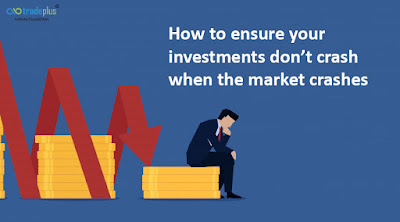If you are confused with market volatility, it is time to buy index ETFs
In a span of just 45 trading sessions, the Nifty cracked from 12,340 down to 8469 resulting in a net loss of 31.5% in just a little over a month. But what should be the investment strategy now? It is simple to say that this is the right time to buy stocks but what stocks do you buy when stocks like HDFC Bank and TCS have lost 30% from their peaks and a stock like RIL has lost 40% in just one month? The easier answer is to go for buying the index. That is because; fishing in troubled waters is fraught with risks and it is hard to put a stop loss in such a volatile market. A simpler answer would be to start accumulating index ETFs.
Let us first understand an index ETF
Did you know that the Sensex has appreciated from 100 to 42,000 in a span of last 40 years? That is a compounded annual return of around 16.5%. If you add the dividends, the annual returns would be closer to 18%. But you may wonder how to buy the Sensex? That is where an index ETF comes in handy. Of course, you can also buy an index fund but we shall stick to an index fund for reasons we shall discuss later. In short, an index ETF is just like an index fund. It creates a portfolio of index stocks like the Nifty or the Sensex. The portfolio of the index ETF mirrors the Nifty or the Sensex in terms of the stocks and also in terms of the proportion of each stock. Let us look at how an index ETF different from an index fund?
Also Read: ETF A Great Investment Vehicle – Why?
Firstly, index funds are open ended while index ETF is closed ended. That means; you cannot purchase or redeem the ETF with the fund. ETFs are listed and you can buy and sell them in the stock exchange. Secondly, index ETFs are more attuned to capitalizing on volatile markets. Index funds give you end-of-day NAVs whereas index ETF gives you live prices. ETFs are normally a fraction of 1/10th or 1/100th of the index value. Lastly, index ETFs have a lower cost structure compared to index funds, which makes a big difference eventually.
Indian markets have seen sharp bounces after sharp corrections
If you look at the major stock market corrections in the last 16 years, most of these have resulted in phenomenal returns in the next 2 to 3 years. Here is how.
In each of these corrections, most retail investors had either invested at the top or did not have the stomach to buy stocks at the bottom. The best way to play the current situation is through the index ETF route. By purchasing an index ETF you have the assurance that these indices have always given 12-13% minimum over longer periods of time. You automatically get a diversified portfolio with only market risk and no stock selection risk.
But the big edge in index ETFs comes from low costs
You can never reliably call the top or the bottom of the market. More important it is not important to find the bottom of the market. Sharp corrections like what we have seen in the last one month are reason enough. You can invest in the index ETF over the next few weeks and you should get a good entry price. That is because the market recovery from here on will be gradual. That will give you ample time to accumulate the index ETFs.
One small caveat to remember! Don’t rush in to buy sectoral and thematic ETFs. They can be quite risky. Instead stick to diversified ETFs on the Nifty and the Sensex. As can be seen in the table above, the real big advantage is low costs. Empirical data shows that indices have done well after such sharp corrections. Therefore your risk-reward ratio of buying index ETFs at this point should be highly favorable. For investors who are confused by the volatility, that should be a good approach.
Here is the list of INDEX ETFs listed in NSE website.






Comments
Post a Comment